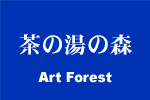 |
Citizens of Takayama still enjoy tea. Many arts of famous contemporary artists and national assets are displayed. Also, their tea bowls are available for an experimental tea ceremony. |

Citizens of Takayama still enjoy tea. Many arts of famous contemporary artists and national assets are displayed. Also, their tea bowls are available for an experimental tea ceremony.
|
Hida Takayama Chanoyu‐no‐mori
Hida Takayama is known as the traditional city and
citizens of Takayama still enjoy tea. |
|
Chanoyu museum Comfortable space to feel Japanese beauty of tea ceremony
Arts possessed and displayed Chanoyu Museum possesses about 1,600 arts of living national treasures, modern craftsmen, the grand masters of Sado, Senke Jyushoku and many hanging scrolls of historical important people. |
|
In the 1F exhibition room
About 80 works of living national treasures and Raku families are always displayed in turn. |
|
|
Art of living national treasure Shino style tea bowl, 1955 |
|
Art of Raku Ware
|
||
|
Red Raku tea bowl , named “Ohbeshimi”
|
|
Art of Senke Jyushoku |
||||||||||||||||||||||
|
Water jar with chrysanthemums and flowing
water design in gold decoration ,named "kokonoe"
by 16th Eiraku Sokuzen (1917-1998)
|
|
In the 2F exhibition room
|
|
Tea arbor, Zuiun-an |
||
|
In the tea arbor, called Zuiun-an, tea is served using tea bowls, which are made by living national treasures and other famous potters. Tea and/or meal can be served here.
|
|
Dohkaku-an |
|
In detached tea arbor, called Dohkaku-an, which is built
using only Japanese yew, presents more elegant atmosphere.
|
|
© Hida Takayama Cyanoyu-no-mori |